Buffering Biodiversity
You may have already visited some of them.
Three nature parks – Springleaf, Chestnut and Windsor – have opened near the Central Catchment Nature Reserve, Singapore’s largest nature reserve.
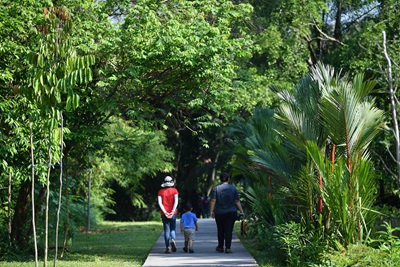
Take a stroll in our many gardens and parks. Photo credit: NParks
These parks offer a place for you to relax or exercise, but do you know they are different from other public parks? They are set up on the margins of the Central Catchment Nature Reserve to protect the reserve – the last bastion of biodiversity here – from nearby developments. These “green buffers” also divert visitors away from the reserve, reducing visitor pressures, by offering an alternative nature venue.
Overcrowding in the reserve can harm native flora and fauna and may lead to human-wildlife conflicts. To safeguard native flora and fauna in nature reserves, there are restrictions on certain activities. For instance, dogs are not allowed in nature reserves. In public and nature parks, dogs must be leashed.
Meanwhile, you can still enjoy plenty of wildlife at nature parks as they have been enhanced to be more rustic and forested compared to public parks. Among other things, they provide a safe haven for native species and pit-stops for migratory birds.
Here are some of the wildlife and other attractions that can be seen at these parks. While enjoying them, don’t forget to keep to NParks' recommended trail etiquette, which you can read more about here.
Windsor Nature Park

Windsor Nature Park. Photo credit: NParks
Opened: April 2017
Size: 75 ha
Where: 30 Venus Drive, near Singapore Island Country Club
Spot Wildlife:
- Rare native plants
One of the best places to check out these plants is at the Hanguana Trail. The trail is named after two recently discovered species, Hanguana neglecta and Hanguana rubinea. Both these plants are native to Singapore, and have black and bright ruby red-coloured berries respectively. The trail also features plants named after Singapore such as the Singapore Ginger (Zingiber singapurense) and the Singapore Durian (Durio singaporensis).
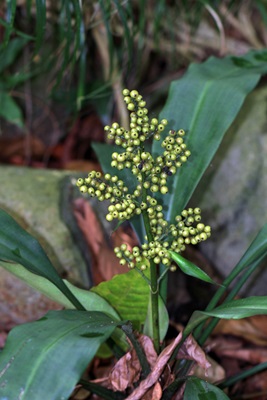
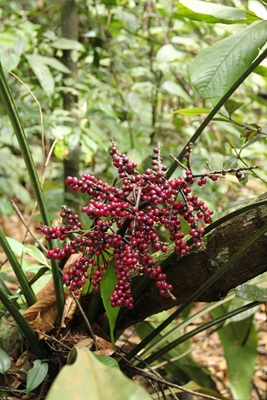
Hanguana neglecta with ripening green berries (left). Photo credit: Vicky Lim Yen Ngoh; Hanguana rubinea (right). Photo credit: Ang Wee Foong
- Dragonflies
Almost half of the 122 dragonfly species in Singapore can be found at this park. You can look out for them at the marsh habitat along the Drongo Trail and the several freshwater streams that weave through the park. Three species – the Nighthawker (Heliaeschna crassa), the Lesser Nighthawker (Heliaeschna uninervulata) and the Spear-tailed Duskhawker (Gynacantha dohrni) – are record smashing, having only been recently discovered in Singapore.
Other Attractions:
Embark on a sub-canopy walk at The Drongo Trail. The boardwalk, which is four metres above the ground, is the first sub-canopy walk in the Central Catchment Nature Reserve which connects to the MacRitchie TreeTop Walk. Keep an eye out for animals such as the Greater Racket-tailed Drongo (Dicrurus paradiseus), the bird with a long forked tail which the trail is named after.
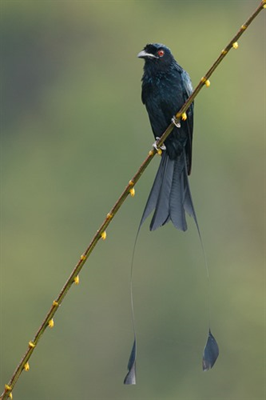
Greater Racket-tailed Drongo. Photo credit: Francis Yap
For more information, visit Windsor Nature Park.
Chestnut Nature Park
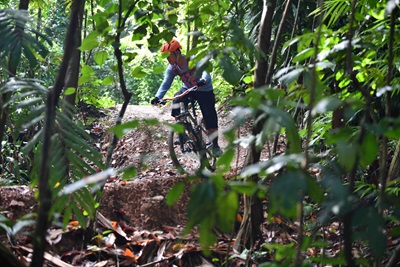
Biking Trails in Chestnut Nature Park. Photo credit: NParks
Opened: Chestnut Nature Park (South) April 2016; Chestnut Nature Park (North) Feb 2017
Total Size: 81 ha
Where: Along Chestnut Avenue
Spot Wildlife:
- Native trees
To boost biodiversity, Chestnut Nature Park, which is Singapore’s largest nature park and takes up an area bigger than 110 soccer fields, has been planted with native trees. They include the Jelutong (Dyera costulata), a tall forest tree and the Singapore Walking-Stick Palm (Rhopaloblaste singaporensis), so named because you can use its stems for making walking sticks. These native tree species “connect” green spaces so that animals can move around safely.
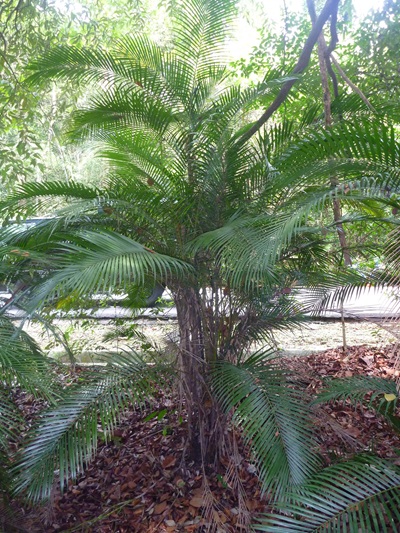
Singapore Walking-Stick Palm. Photo credit: Ang Wee Foong
Other Attractions:
- There are plenty of trails for bikers and hikers and the good news is that they do not have to share them. In fact, Chestnut Nature Park is the only park which has separate trails for biking and hiking.
- Stunt bikers would be pleased to know that Singapore’s first pump track is located within the park.
- There is even a kiosk for visitors to rent and wash bikes.
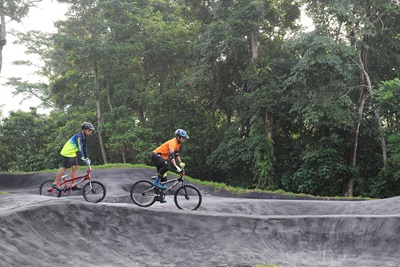
Pump Track in Chestnut Nature Park. Photo credit: NParks
To find out more, visit Chestnut Nature Park.
Springleaf Nature Park
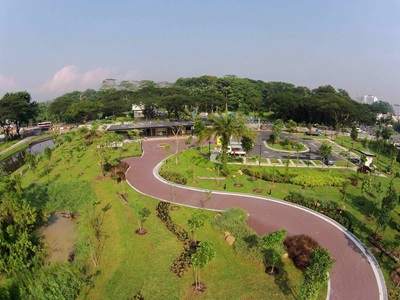
Springleaf Nature Park. Photo credit: NParks
Opened: November 2014
Size: 6 ha
Where: Nee Soon Road, Upper Thomson Road
Spot Wildlife:
- Native and Migratory Birds
Over 80 species of resident and migratory birds call this park their home. To make birdwatching easier for visitors, the park is equipped with an elevated observation deck. Keep a look out for the White-throated Kingfisher (Halcyon smyrnensis), Blue-tailed Bee eater (Merops philippinus) and Long-tailed Parakeet (Psittacula longicauda).
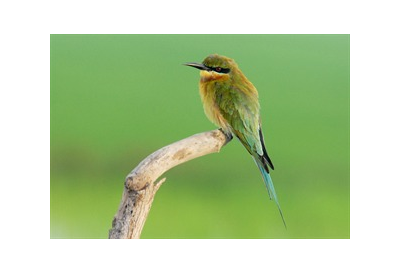
Blue-tailed Bee eater. Photo credit: Cai Yixiong
Other Attractions:
The park was formerly part of the Chan Chu Kang kampung, named after its then headman, Chan Ah Lak, who acquired the land near Seletar River to cultivate pepper and gambier. It also used to be an oil palm plantation and you can still see some oil palms there.
To find out more, visit Springleaf Nature Park.
Interested to learn more about the different kinds of forests that occupy our nature parks and green spaces? Check out our video below to learn five reasons why forests are our friends.
Text by Lea Wee





Have views or comments on this article? Let us know via this form. If you would like to give us feedback on any other areas relating to our parks and gardens, please submit via https://www.nparks.gov.sg/feedback